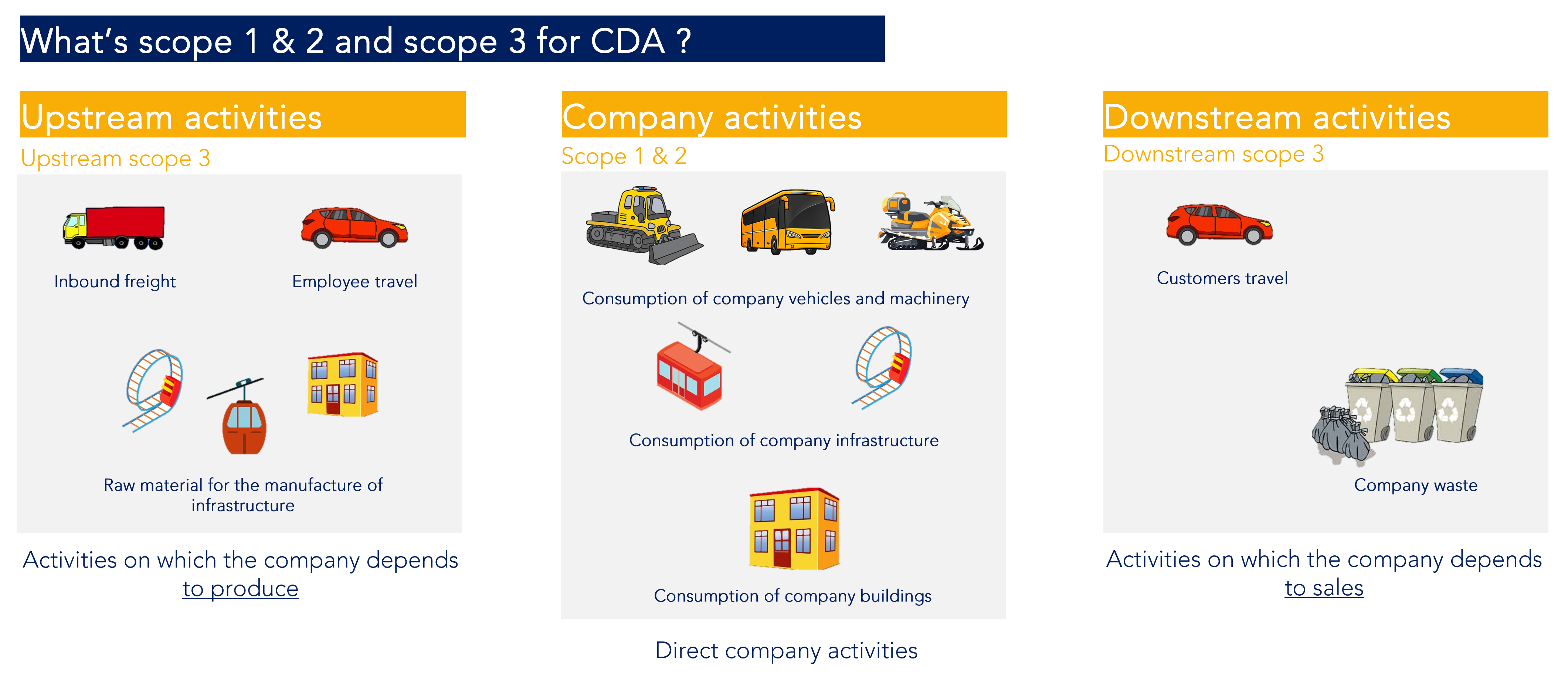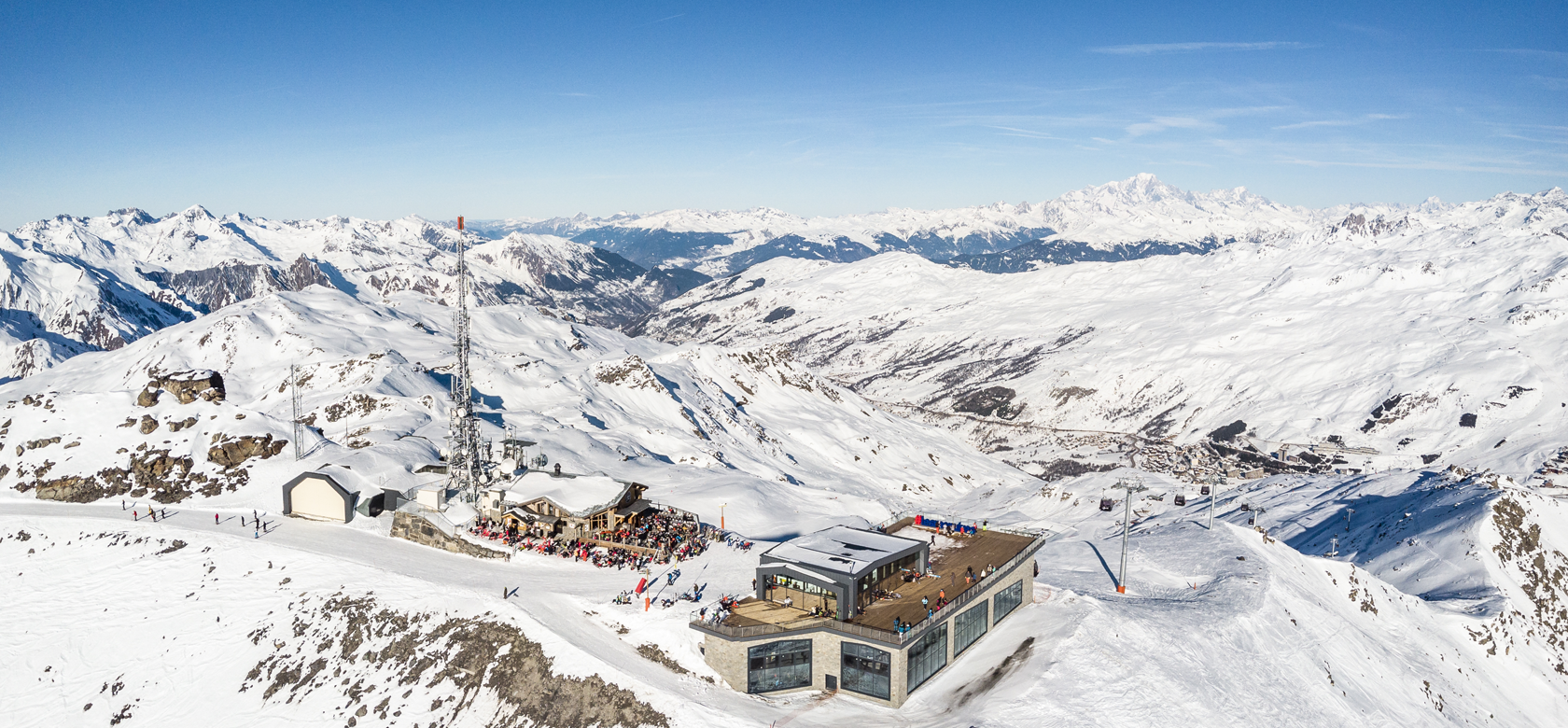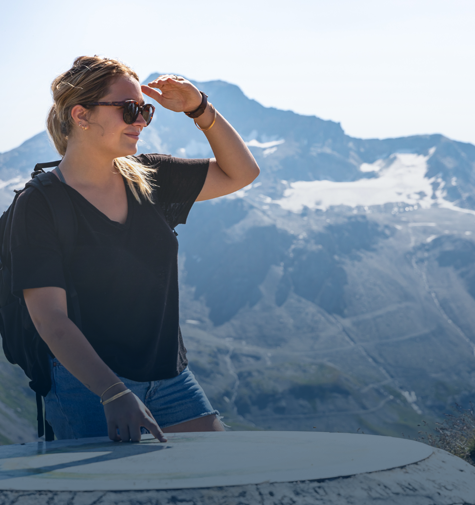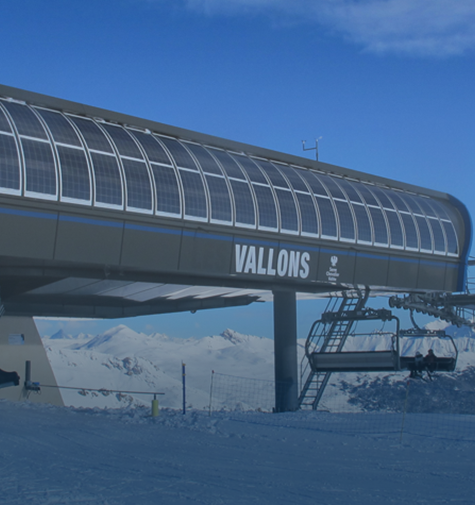All about Net Zero Carbon
HOW DID CDA DEVELOP ITS TRAJECTORIES
In France, the National Low-Carbon Strategy (SNBC) provides guidelines for implementing the transition to a low-carbon, circular and sustainable economy in all sectors of activity. In particular, it defines a trajectory for reducing greenhouse gas emissions until 2050 and sets short- and medium-term objectives for the various sectors of activity. However, CDA's activities do not fall into a very carbon-intensive category compared to other activities for which reduction targets are set by sector (e.g. cement, automotive, buildings, energy production, etc.):
- CDA activities are not eligible for the European Taxonomy which, in its first version, focuses on the largest emitters.
- The Group is not concerned by the EU Emissions Trading Scheme (EU ETS) which applies to the most intensive European emitters.
Nevertheless, all the Ski Areas and Leisure Parks sites have drawn up their own trajectories based on :
- scope 1 and 2 emissions assessments, carried out each year o concrete actions to be taken to reduce each GHG emissions item in scope 1 and 2
- the financial means to achieve this:
> The necessary investments and the additional cost specific to the decarbonisation trajectory
> The energy savings or additional costs as a result of the actions carried out
> The potential reduction of greenhouse gases generated by each action, compared to the reference year (2018/2019).
The sum of these results now provides each site with a clear and operational trajectory with quantified objectives to be achieved in terms of GHG emission reductions, the actions to be implemented to achieve them and the financial resources to be mobilised.
SCOPES 1, 2 AND 3: WHAT ARE WE TALKING ABOUT?

To measure the carbon footprint, the methods in place categorise GHG emissions into three distinct perimeters: the "Scopes".
- Scope 1 covers the direct emissions produced by the company and its combustion of fossil fuels (fuel, oil, gas, coal, etc.). These are the emissions for which the company is entirely responsible, and come from the combustion of buildings, infrastructures, vehicles or machinery that it owns or controls.
- Scope 2 concerns the sum of emissions that are emitted indirectly by the company when it produces or purchases electricity, heat, steam or cooling.
- Scope 3 covers everything else. It takes into account all the GHG emissions that could occur upstream or downstream of the company's activities. For example, emissions linked to the manufacture and transport of raw materials and goods purchased, linked to the energy consumption of service providers we may use, or linked to the travel of employees (work or home) or visitors to our sites. This is a major part of the carbon footprint.
WHAT ARE CDA'S DIRECT EMISSIONS SOURCES?
The main impact of our activities in terms of greenhouse gases comes from energy consumption on site, but differs according to the business line and the country where the site is located.
- First of all, our activities are largely electrified (ski lifts, snow guns, attractions, heating of buildings)
- Our main impact concerns the consumption of fossil fuels for vehicles, particularly grooming equipment in the Ski Areas, and the production of heat in the Leisure Parks
- In Belgium and the Netherlands, electricity is more carbon intensive than in France and our emissions are also linked to the need for heat on site
- To a lesser extent, the generation of cold can generate greenhouse gas emissions.
WHAT ARE THE ACTIONS ON SCOPE 3 ?
CDA is committed to publishing its full carbon footprint (including scope 3) by 2024 at the latest, but is already taking action in this area and is committed to multiplying its initiatives.
Working in partnership with our suppliers:
In 2022, as part of its Raison d'Être, the Group validated its commitment to reduce scope 3 emissions, in particular by monitoring the proportion of its expenditure covered by suppliers in line with the Paris Agreements. A structured approach to monitoring and supporting suppliers is currently being consolidated.
Using the circular and local economy:
Since its start-up in 2011, the business of modifying and relocating ski lifts has become a core activity of Ingelo (the Group's internal engineering subsidiary).
As a result, 14 chairlifts and 9 drag lifts were relocated/modified from 2011 to 2022, and the subsidiary has created and is now serving this "second-hand" market that equipment manufacturers are not addressing. Ingelo has therefore become an in-house player in the circular economy, recycling and reusing old equipment to reinstall it in new locations, instead of purchasing new equipment.
> Since 2016: reconditioning of grooming equipment within 100km of the resorts. In an accelerated process, 6 machines were reconditioned in 2021 and 2022.
> In 2021, the Group signed a precycling partnership with the company IDM to transform ski lift tires into anti-skid mats for ski lift stations, all in the Rhône-Alpes region. For the 2021-2022 season, the Group's ski areas have redirected 31 tonnes of tyres to this new industrial process, which will give them a second life in the form of 12,000 Ecoverclip® tiles, some of which are then reinstalled in our ski lift stations. Following an LCA analysis, 218 t of CO2 were avoided as a result of this operation. The Funiplagne departure station was the first in France to be equipped with 130m² of these mats and is participating in the feedback on the sustainability of the products.
> In 2021, the 13 km of outdoor bleachers in the Futuroscope Park will be renewed and made from 6,900 recycled Tetra Pak® bricks by a regional company. (more information)
Sustainable management of our visitors' journeys
> 2021 : The Group relaunches the London - Moutiers - Bourg Saint Maurice rail line, marketed by Travelfactory (a 100% CDA subsidiary) under the name "Travelski Express" (find out more).
2022 : The Group renews the Travelski express from London and rolls out the concept in France on the Paris - Moutiers - Bourg Saint Maurice line, marketed by Travelfactory (a 100% CDA subsidiary) under the name "Travelski Express".
2023 : Through its subsidiary Travelfactory, the Group launches a European call for tenders to offer customers a sustainable low-carbon rail mobility service from France, the UK, the Netherlands and Belgium (from Paris, London, Amsterdam and Brussels) to the French Alps over the three-year period 2024 - 2027 (more). At the same time, for the third season the Group is marketing a Travelski express offer on the London - Moutiers - Bourg Saint Maurice rail line (new travel format developed by Eurostar, including a train change in Lille).
> Access to Futuroscope is facilitated by a pedestrian bridge directly connected to the TGV/TER station.
> Combined tickets offer discounts for travel to Walibi Belgium, Aqualibi or Bellewaerde and Aquapark via the rail network.
> The funicular between Bourg-Saint-Maurice station and Les Arcs 1600 has been renovated in 2019 and access is free on presentation of a train ticket to the Les Arcs ski resort.
> Several public transport solutions exist to get to the leisure sites: free station shuttles (in Tignes and Val d'Isère), shuttles from Paris or Charles de Gaulle airport to Parc Astérix, long-distance bus services that now stop at Parc Astérix or Walibi Rhône-Alpes (in high season).
> The leisure parks are also supporting their customers' electric mobility with the gradual installation of nearly 1,000 recharging stations in their car parks.
HOW DOES THE CDA TRAJECTORY RELATE TO THE PARIS AGREEMENT?
Every economic actor is called upon to "do their part" to achieve the objectives of the Paris Agreement adopted in 2015. This international agreement aims to keep global warming well below 2°C by 2100, and if possible to limit the rise in temperature to 1.5°C. For actors not belonging to a sector that has a specific trajectory, Science Based Target initiatives (SBTi) has identified indicative trajectories called "absolute contraction approach". Over the period 2020-2035, the indicative trajectory to be followed for Scopes 1 and 2 are
- A reduction of at least 4.2% per year to align with the Paris Agreement - 1.5°C
- A reduction of at least 2.5% per year to align with the "Paris Agreement - well below 2°C" objective
The Group's Net Zero Carbon plan aims to achieve greater GHG emission reductions than the above trajectories.
WHY IS IT IMPORTANT FOR CDA TO CONTRIBUTE TO THE PARIS AGREEMENT?
At Compagnie des Alpes, we are convinced that it is our responsibility to ensure the sustainability and preservation of the exceptional territories in which we operate. The urgency to act is supported by the Group's management and all its employees.
Helping local authorities and territories (including our delegates) to achieve their climate objectives within their territory is a direct mark of added value in the territory by contributing to a dynamic and a collective effort.
Global warming poses a very significant risk to winter sports activity in the long term. It is therefore imperative and legitimate to "defend snow and winters" by following the trajectory of the Paris agreements.
Beyond the economic model of winter sports or mountain practices, it is also an intangible heritage linked to the mountains and winters that could disappear, and of which CDA is the guardian:
- The group's resorts have inherited the economic model of winter sports in the wake of the Plan Neige of the 1950s and 1960s, which had multiple objectives:
> To fight against the rural exodus by stimulating the local economy in a context of numerous obstacles to development in mountain areas,
> to offer mass leisure activities, symbols of modernity and a democratic ideal with openness to as many people as possible
> To balance the balance of trade by attracting foreign currency.
> Over the decades, an intangible heritage has been built up linked to leisure activities in the snow, which are a source of wonder, well-being, family and intergenerational links and a factory of unforgettable memories for many generations.
For leisure parks located in urban or peri-urban areas, the increase in the frequency and intensity of heat waves is an exogenous risk to be taken into account concerning their use. Some of them are also exposed to flooding risks, such as at Walibi Belgium in 2021.



